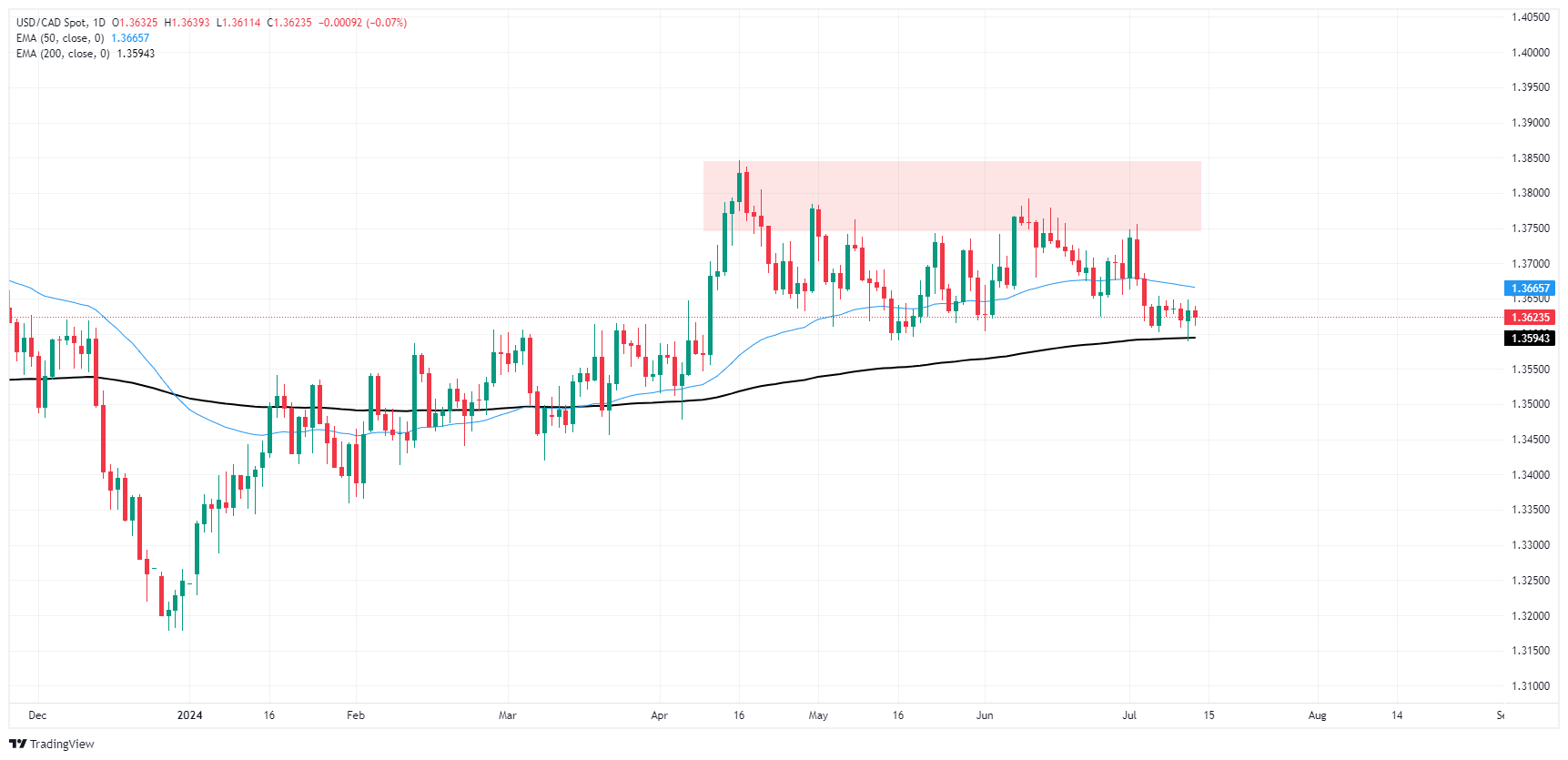- The Canadian greenback declined on Friday as CAD investors retreated for the weekend.
- Canada unfailingly allows any other smart contraction in untapped growth.
- US PPI wholesale inflation has picked up, although markets are inclined to ignore this.
The Canadian greenback (CAD) declined in weight on Friday, falling on the basis of some of the worst performing major currencies for the subsequent consultation of buying and selling positions. Broader markets are shrugging off the surprising run-up in US producer price index (PPI) wholesale inflation, instead focusing on already subdued consumer price index (CPI) inflation.
Canada recorded the second-fastest contraction of 2024 in construction inventories in May, leading to further declines in the CAD and sending the Canadian dollar poised to churn lower as investors await later Tuesday’s Canadian CPI inflation print. Were.
Daily Digest Marketplace Movers: The Canadian Greenback Stumbles on Bad Housing Knowledge
- The size of Canadian construction lettings declined 12.2% in May, the second-largest decline in 2024.
- US core PPI wholesale inflation notably rose in June, coming in at some .0% year-on-year compared to the expected 2.5%.
- The print length was increased to 2.6% from the initial 2.3%.
- MoM Core US PPI increased by 0.4% MoM, double the forecast of 0.2% in the previous print, which was similarly revised up from an initial 0.0% to 0.3%.
- The Michigan College Client Sentiment Index for July dropped to a seven-month low of 66.0 from 68.2 previously, raising the forecast to 68.5.
- Despite a pick-up in producer-level inflation, markets are largely leaning bullish, focused on Thursday’s lower-than-expected CPI inflation print.
Technical Research: USD/CAD remains in demand in the mid to near term
The Canadian Greenback (CAD) was one of the worst performing currencies on Friday, losing weight across the board and having difficulty making any significant movement against the USA Greenback. USD/CAD is stuck in a position just above 1.3600, and moving further into a prolonged consolidation phase is risky as the pair gives negligible reasons why it has a very long way to go in either direction.
Intraday bids are additionally limited under the 200-hour exponential moving average (EMA) at 1.3640, and downside checks have not been able to gain a foothold below 1.3600. Daily candlesticks are strengthened through the 200-day EMA at 1.2594, with any bullish attempts keeping a lid on the challenge force day of the supply zone with the price above the 1.3750 cap.
USD/CAD Hourly Chart
USD/CAD Daily Chart
Canadian Greenback FAQ
The key components of the Canadian greenback (CAD) are the range of interest rates set by the Bank of Canada (BoC), the price of oil, Canada’s largest export, the fitness of its financial system, inflation and trade stability. , which is the balance between the value of Canada’s exports versus its imports. Alternative factors come with market sentiment – whether investors are taking on additional risky assets (risk-on) or looking for safe-haven assets (risk-off) – with risk-on CAD being positive. As its largest trading partner, the fitness of the US financial system could also be a major issue impacting the Canadian dollar.
The Bank of Canada (BoC) has a significant impact on the Canadian greenback through a range of interest rates that banks can offer each other. This affects the range of interest rates for everyone. The primary objective of the BOC is to maintain inflation at 1-3% by raising or lowering interest rates. I definitely have a slight upward trend in interest rates for CAD. With the previous CAD-negative and the maximum CAD-positive, Canadian deposits may also require quantitative easing and tightening to control credit score conditions.
The price of oil is a major issue affecting the price of the Canadian greenback. Petroleum is Canada’s largest export, so the price of oil has an immediate impact on the CAD value. Generally, if the price of oil increases, the CAD also increases, as aggregate demand for the currency increases. The second thing is if the price of oil falls. Higher oil prices generally lead to better prospects for favorable business stability, which may also be supportive for the CAD.
Weekly inflation has always been considered a denoising factor for the currency as it lowers the price of cash, on the other hand, this has actually been the case in modern times with the inactivity of cross border capital controls. Inflation tends to lead central banks to set interest rates that attract additional capital inflows from international traders looking for a profitable park to preserve their cash. This will increase demand for the native foreign currency, which in the case of Canada is the Canadian greenback.
Macroeconomic data releases assess the fitness of the financial system and can impact the Canadian dollar. Indicators such as GDP, production and product and service PMIs, job and consumer sentiment surveys can all influence the course of CAD. A strong financial system is perfect for the Canadian Greenback. Now not only does this attract additional foreign funding, but it will also push Canadian deposit interest rates up, which is important for a more powerful currency. Alternatively, if financial knowledge is weak, the CAD is likely to fall.
Discover more from news2source
Subscribe to get the latest posts sent to your email.




